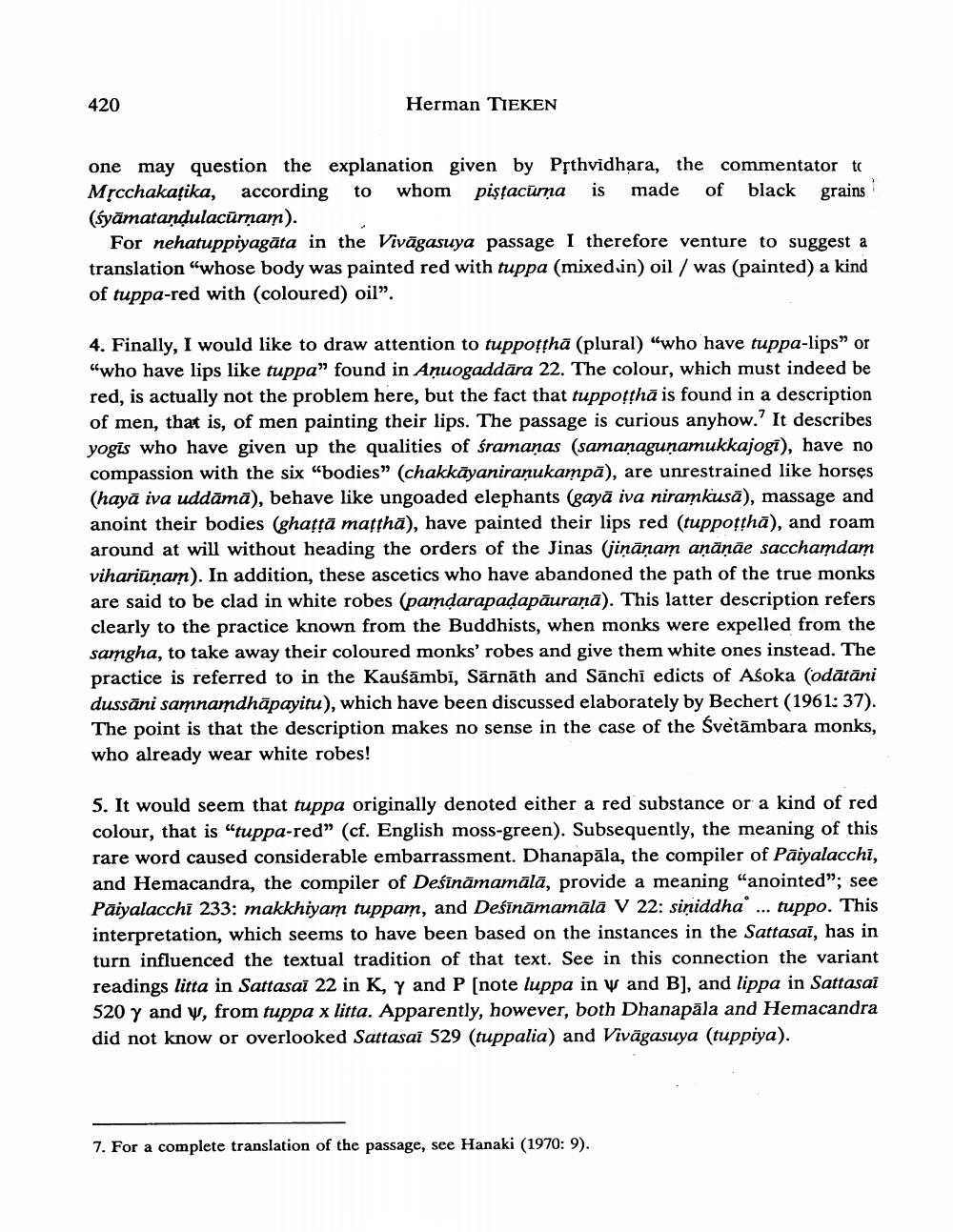________________
420
Herman TIEKEN
one may question the explanation given by Pșthvidhara, the commentator to Myochakațika, according to whom piştacūrņa is made of black grains (śyāmatandulacūrņam).
For nehatuppiyagāta in the Vivāgasuya passage I therefore venture to suggest a translation "whose body was painted red with tuppa (mixed.in) oil / was (painted) a kind of tuppa-red with (coloured) oil”.
4. Finally, I would like to draw attention to tuppotthā (plural) “who have tuppa-lips" or “who have lips like tuppa" found in Aņuogaddāra 22. The colour, which must indeed be red, is actually not the problem here, but the fact that tuppotthā is found in a description of men, that is, of men painting their lips. The passage is curious anyhow.? It describes yogis who have given up the qualities of śramaņas (samaņagunamukkajogi), have no compassion with the six "bodies” (chakkāyaniraņukampā), are unrestrained like horses (hayā iva uddāmā), behave like ungoaded elephants (gayā iva niramkusā), massage and anoint their bodies (ghațțā matthā), have painted their lips red (tuppoțhā), and roam around at will without heading the orders of the Jinas (jiņāņam anänäe sacchamdam vihariūņam). In addition, these ascetics who have abandoned the path of the true monks are said to be clad in white robes (pamdarapadapāuraņā). This latter description refers clearly to the practice known from the Buddhists, when monks were expelled from the samgha, to take away their coloured monks' robes and give them white ones instead. The practice is referred to in the Kaušāmbi, Sārnāth and Sānchi edicts of Asoka (odātāni dussāni samnamdhäpayitu), which have been discussed elaborately by Bechert (1961: 37). The point is that the description makes no sense in the case of the Svetämbara monks, who already wear white robes!
5. It would seem that tuppa originally denoted either a red substance or a kind of red colour, that is "tuppa-red” (cf. English moss-green). Subsequently, the meaning of this rare word caused considerable embarrassment. Dhanapāla, the compiler of Pāiyalacchi, and Hemacandra, the compiler of Deśīnāmamālā, provide a meaning "anointed"; see Pāiyalacchi 233: makkhiyam tuppam, and Deśīnāmamäla V 22: siņiddha' ... tuppo. This interpretation, which seems to have been based on the instances in the Sattasai, has in turn influenced the textual tradition of that text. See in this connection the variant readings litta in Sattasai 22 in K, y and P (note luppa in v and B], and lippa in Sattasai 520 y and y, from tuppa x litta. Apparently, however, both Dhanapāla and Hemacandra did not know or overlooked Sattasai 529 (tuppalia) and Vivägasuya (tuppiya).
7. For a complete translation of the passage, see Hanaki (1970: 9).




